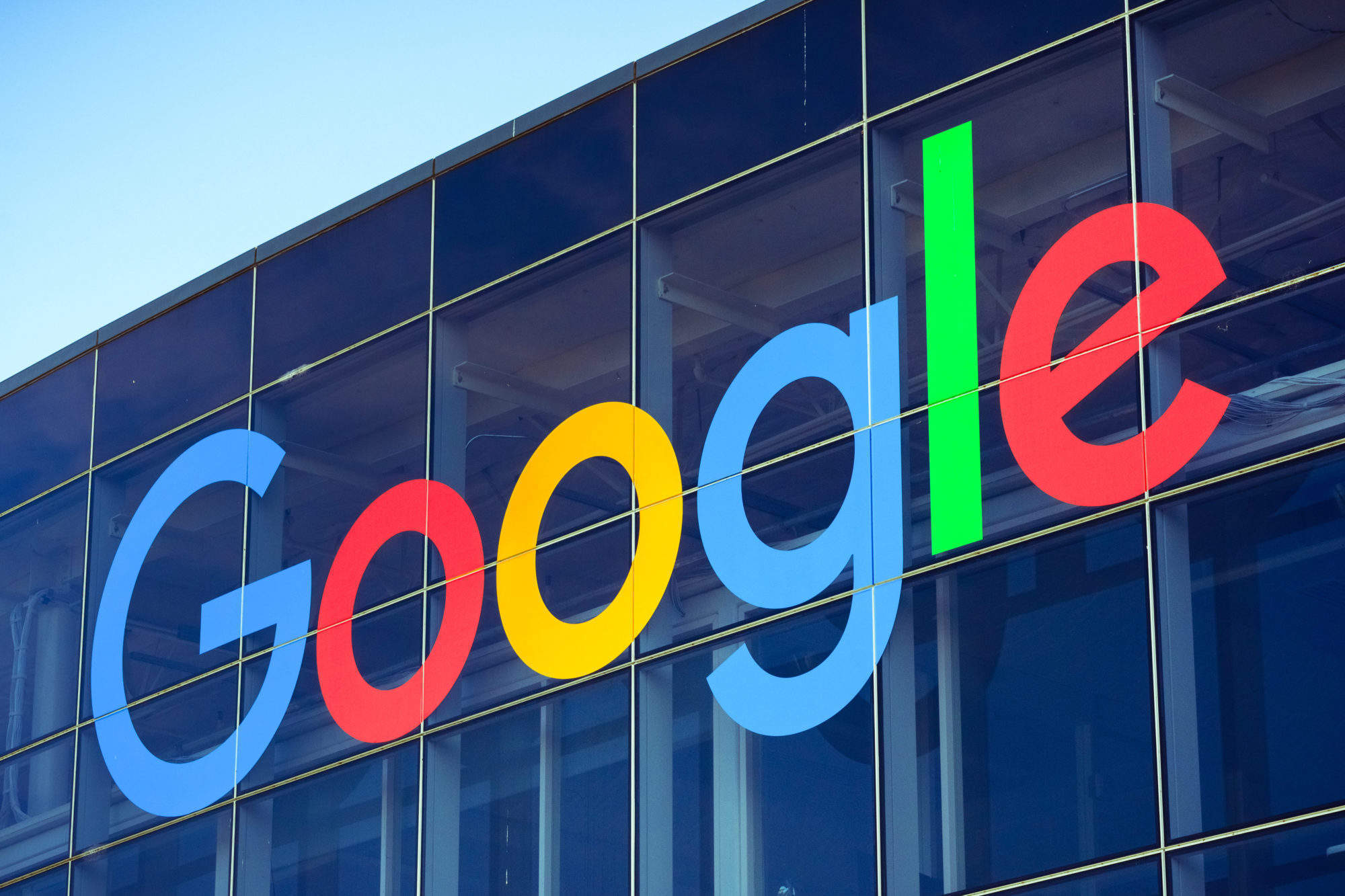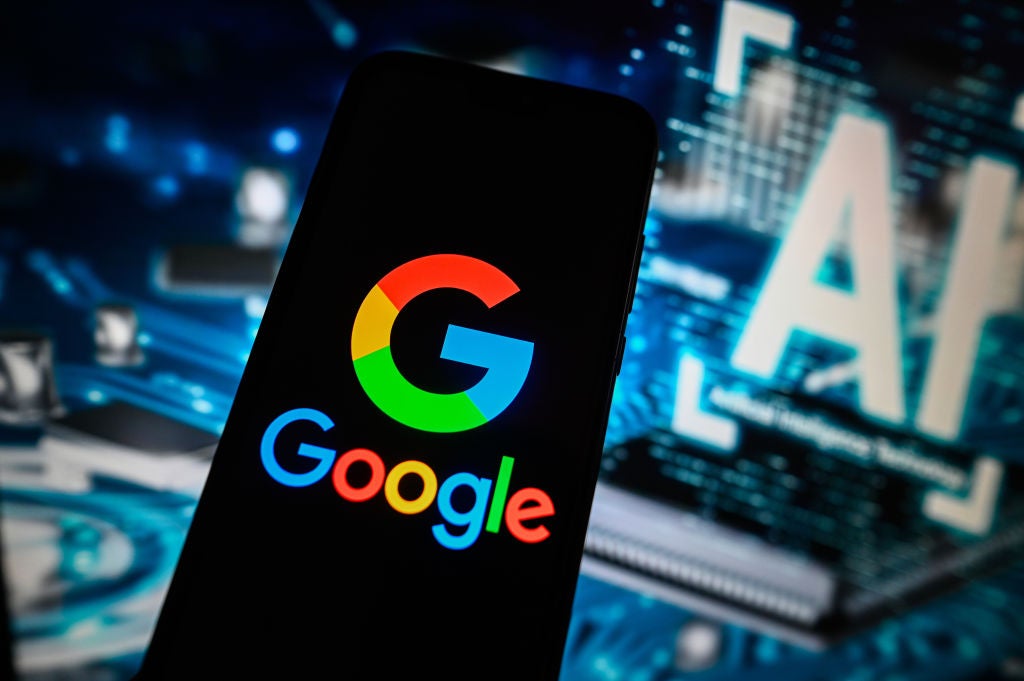
It is difficult to imagine a world without Google. The search engine gives us access to an endless sea of information and the phrase “to google” is now a recognised verb in the Oxford English Dictionary. After 20 years of Google, the company is far more than a search engine.
From advertising to driverless cars, Verdict looks at 20 of the $850bn company’s products.
1998: A search engine is born
Google may be a very different company now compared to 1998 but at its core it is still a search engine first and foremost. Two years after releasing their search engine on the Stanford Web, Larry Page and Sergey Brin turn Google into an official corporation on 7 September 1998. The company’s mission statement was to “organise the world’s information and make it universally accessible and useful”. The search engine now receives over three billion queries every day.
2000: Advertising
Google began to monetise its search engine with the introduction of AdWords, its keyword-related contextual advertising. Companies could pay for unobtrusive text advertisements placed at the side of search results. For the first time the search engine became profitable. Google later released further advertising services such as DoubleClick, AdSense and AdMob. In Q1 2018, $26.6bn of the company’s $31.1bn revenue came from advertising.
2002: Google News
The news aggregator trawls over 75,000 Google-approved publications from across the world into a continuous flow of news. The beta version launched in September 2002 and was officially released in January 2006. According to Google executives, more than 1 billion people visit Google News every week.
2005: Google Analytics
Part of Google’s Marketing Platform, Google Analytics monitors website traffic and usage. It is integrated with Google AdWords to allow users to review the success of their online campaigns. While it is the most widely used web analytics service, it has some limitations, such as inaccurate data from browsers deleting or blocking cookies.
How well do you really know your competitors?
Access the most comprehensive Company Profiles on the market, powered by GlobalData. Save hours of research. Gain competitive edge.

Thank you!
Your download email will arrive shortly
Not ready to buy yet? Download a free sample
We are confident about the unique quality of our Company Profiles. However, we want you to make the most beneficial decision for your business, so we offer a free sample that you can download by submitting the below form
By GlobalData2005: Maps
Google offers aerial views taken from aircraft and satellites on its Google Maps and Google Earth services. It is updated regularly and over the years has added more functions, such as business indexing, reviews and public transport routes.
2006: YouTube
Google acquired video sharing platform YouTube for $1.65bn, with at the time Google chief executive Eric Schmidt describing the two companies as “natural partners”. YouTube earns advertising revenue from Google AdSense, which targets ads to different audiences.
2006: Google Translate
The translation service initially used United Nations and European Parliament transcripts to gather linguistic data. The free-to-use service now uses a neural machine translation engine, which processes whole sentences at a time to better translate naturally spoken language.
2006: G Suite
Google launches a host of free to use cloud computing tools. The services now include Drive for storage and Google Docs for word processing. Its email service, Gmail, became available to the general public on 7 February 2007.
2008: Google Chrome
In September 2008 Google launched its own web browser. Ten years later, it now has a 56% market share across platforms combined. This is largely because of its market share on mobile devices, which amounts to 50%.
2008: First Android-based phone
Having acquired Android in 2005, the HTC Dream was the first commercially available mobile to run using the Linux-based Android operating system. Released in September, it was also known as the T-Mobile G1. It received mixed reviews but reached a market share of 6%.
2009: Driverless cars
Driverless cars are not yet widespread, but Google’s foray into autonomous vehicles began nearly ten years ago as the Google Self-Driving Car Project. Now known as Waymo, the Alphabet subsidiary is trialling its autonomous ride-hailing business in Arizona. The company intends to offer the service publicly by the end of 2018. Waymo sued Uber in 2017 for trade secret theft.
2010: First Google phone
Google built on the release of the first Android phone with its first phone in the Nexus range. The Nexus One, launched 5 January, featured voice to text transcription and sat nav. Google would go on to release seven more phones in the Nexus line, as well as several Nexus tablets. Google would go on to release another range of phones, starting with the Google Pixel.
2011: Google Wallet
Initially released on 26 May as a peer-to-peer payment service that allowed free money transfers from a mobile or desktop computer. It would pave the way for the merging of Android Pay and Google Wallet into Google Pay, which allows people to tap and pay with their mobiles using NFC technology.
2011: Chromebook
Google launched its line of laptops running a Chrome operating system in 2011. Most of the devices’ applications and data reside in the cloud rather than the machine itself.
2011: Google Fiber
Google also began its foray into telecoms in 2011 with the announcement of Google Fiber an “ultra high-speed broadvand” service designed to combat the poor internet speeds in parts of the US. The company installed the first network in Kansas City, the US, and has since continued to roll out the service to other parts of the country. It currently is available in 19 US cities.
2013: Google Hangouts
The communication platform brought together separate platforms such as Google Talk and Google+ as part of its G Suite offering. However, it suffered from the growth of rivals Facebook Messenger, iMessage and WhatsApp. It has since focused on two products – Hangouts Meet and Hangouts Chat – the former for video conferences and the later for instant messaging.
2013: Google Chromecast
Google cashed in on the cable-cutting revolution. It released the first in a line of its internet-streaming dongles that can be plugged into a TV, selling “millions” in its first year.
2013: Google Glass
Google delved into the world of augmented reality with its brand of smart glasses. Developed by Google X, users interact with information displayed on the glasses’ lens using voice commands. The headset failed to sell commercially and received criticism as a result of privacy concerns. However, it has provided benefits in industry, such as Dr Rafael Grossmann using the glasses to assist surgery for the first time.
2014: Google Cardboard
Google launched its virtual reality platform that enables users to create their own headsets from cardboard. It was designed to introduce users to virtual reality and encourage interest in future applications, such as the 2016 Google Daydream platform and headset. As of March 2017, Google had sold over ten million cardboard headsets and the app has been downloaded over 160 million times.
2016: Google Assistant
Google arrived late to the virtual assistant party. Like Siri, which was released in 2011, Google Assistant uses artificial intelligence to allow users to search the internet, schedule alarms and adjust a device primarily through voice commands. Towards the end of 2016 Google released Google Home, its first voice-activated speaker to compete with the likes of Amazon’s Echo range.
The next 20 years of Google
Google’s revenue is firmly anchored around advertising. However, with the future set to be in the cloud, Google has been making heavy capital investments into cloud infrastructures, such as the $30bn it has spent on undersea cables and data centres.
Google’s secretive research and development wing, Google X, is developing projects including advanced artificial intelligence, a network of WiFi balloons and a ‘web of things’. As Google continues to expand from its origins as a search engine, many will be hoping that the company sticks to its unofficial slogan “don’t be evil”, despite removing it from their code of conduct in May.




